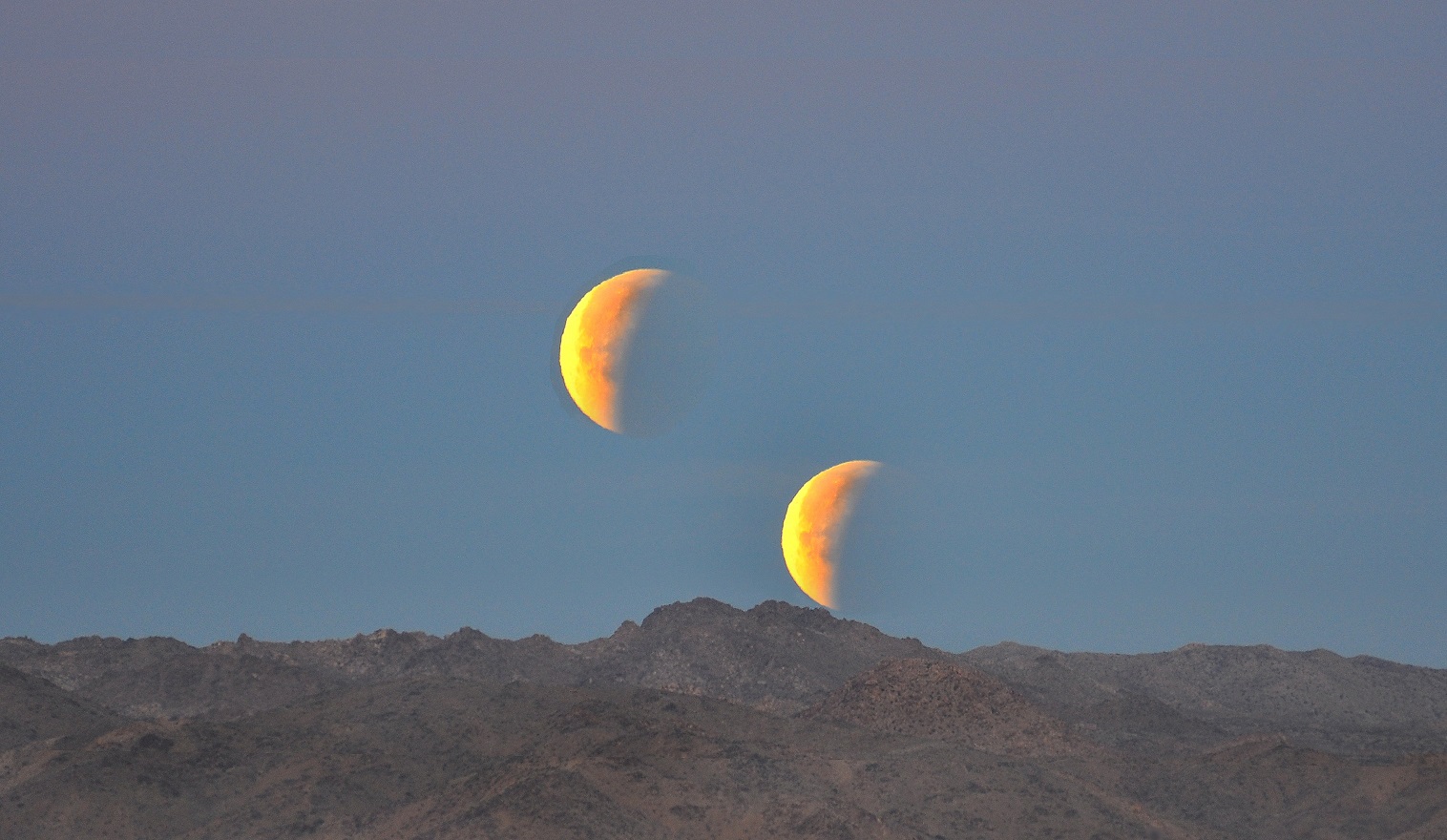The Moons of Telluria
Twin Lights of the Night Sky
Telluria is orbited by two small, spherical planet-like natural satellites called the Mhuna. The Mhun Mhór, meaning "Greater Moon," is the larger and more distant of the two while the Mhun Lú, meaning "Lesser Moon," is smaller with a nearer, swifter orbit.
The gravitational attraction between Telluria and its moons causes tides on Telluria. The same forces have also led to the tidal locking of the two satellites - their rotation periods being the same as their orbital durations. As a consequence, Mhun Mhór and Mhun Lú always present the same faces toward Telluria, although as they approach each other in the sky they sometimes appear to turn their faces slightly toward each other. As the moons orbit Telluria, different parts of their faces are illuminated by the sun so they appear to change shape from round disks to narrow crescents. These differing shapes are known as the "phases of the moons."
The most widely accepted theory for the origin of Telluria's two moons is known as the Great Impact Hypothesis, or "the Big Smash." It postulates that Mhun Mhór and Mhun Lú were created when a large proto-planet, sometimes called Teldus, collided with proto-Telluria. That same event is also presumed to have caused the 24° tilt in Telluria's axis.
In Heremonia, the names used to identify Telluria's natural satellites reflect the influence of the Mílesean Empire upon Western culture, with the almost universal adoption of the old Kiltic terms Mhun Mhór and Mhun Lú to identify them individually. When speaking of them in general, the terms "moon" and "moons" are common substitutes for "satellite."
In the East, the most common names for the moons are Grugodé and Bankalé, the first man and first woman from Nemedic Mythology. In Northern Heberia the names Chaanda and Souma from the Noamese tradition are frequently used.
The gravitational attraction between Telluria and its moons causes tides on Telluria. The same forces have also led to the tidal locking of the two satellites - their rotation periods being the same as their orbital durations. As a consequence, Mhun Mhór and Mhun Lú always present the same faces toward Telluria, although as they approach each other in the sky they sometimes appear to turn their faces slightly toward each other. As the moons orbit Telluria, different parts of their faces are illuminated by the sun so they appear to change shape from round disks to narrow crescents. These differing shapes are known as the "phases of the moons."
The most widely accepted theory for the origin of Telluria's two moons is known as the Great Impact Hypothesis, or "the Big Smash." It postulates that Mhun Mhór and Mhun Lú were created when a large proto-planet, sometimes called Teldus, collided with proto-Telluria. That same event is also presumed to have caused the 24° tilt in Telluria's axis.
First-Quarter Moons Rise in the West - Mhun Mhór (upper left) and Mhun Lú (lower right)
NAMES
In Heremonia, the names used to identify Telluria's natural satellites reflect the influence of the Mílesean Empire upon Western culture, with the almost universal adoption of the old Kiltic terms Mhun Mhór and Mhun Lú to identify them individually. When speaking of them in general, the terms "moon" and "moons" are common substitutes for "satellite."
In the East, the most common names for the moons are Grugodé and Bankalé, the first man and first woman from Nemedic Mythology. In Northern Heberia the names Chaanda and Souma from the Noamese tradition are frequently used.
PART OF A SERIES ON
TELLURIA
Mhun Lú
(TELLURIA I)"The Swift Moon"
Designations
Alternative Names:
Bankalé, Souma (poetic), Henalon (poetic)
Adjectives:
Bankalean, Souman (poetic), Henalian (poetic)
Orbital Characteristics
Orbital Characteristics
Apotel:
121,519 wmi.
Peritel:
108,689 wmi.
Orbital Period:
18.305 days
Average Orbital Speed:
.6081 wmi./s.
Mhun Mhór
(TELLURIA II)"The Slow Moon"
Designations
Designations
Alternative Names:
Adjectives:
Grugodé, Chaanda (poetic), Alcamar (poetic)
Adjectives:
Mhunal, Mhunean, Grugodean, Chaandal (poetic)
Orbital Characteristics
Orbital Characteristics
Apotel:
181,371 wmi.
Peritel:
162,223 wmi.
Orbital Period:
27.256 days
Average Orbital Speed:
.4572 wmi./s.
Location under



Comments